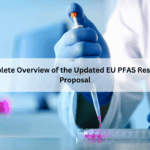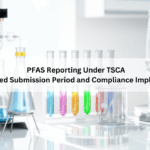Animal-derived ingredients have long been used in cosmetics for their functional and aesthetic properties. From collagen and keratin to beeswax and lanolin, these ingredients contribute to texture, stability, and skin benefits. However, their inclusion raises concerns regarding health safety, ethical sourcing, religious compliance, and consumer transparency. As a result, regulatory bodies worldwide have established frameworks to ensure these ingredients are safe, properly labelled, and ethically sourced.
This article aims to inform manufacturers, formulators, and consumers about the legal and ethical obligations tied to sourcing, processing, and labelling these ingredients. By understanding the rules set forth by global regulatory bodies such as the FDA, EU Commission, and others, stakeholders can ensure product safety, maintain transparency, and meet consumer expectations.
Regulatory oversight of animal-derived ingredients in cosmetics brings several key benefits and impacts. First and foremost, it ensures consumer safety by minimizing the risk of contamination from pathogens such as bacteria, viruses, and prions. Agencies like the FDA and EU require rigorous sourcing and manufacturing standards, including certifications for TSE/BSE-free materials. Transparent labelling practices empower consumers to make informed decisions, especially those seeking vegan, cruelty-free, Halal, or Kosher products. Ethical and religious certifications not only enhance market accessibility but also build brand trust and loyalty. Furthermore, regulatory compliance helps manufacturers avoid legal penalties, product recalls, and reputational damage. As consumer awareness grows, these regulations also drive innovation, encouraging the development of sustainable and animal-free alternatives that align with evolving market demands.
ComplianceXL can play a vital role in helping cosmetic companies navigate the complexities of animal-derived ingredient regulations. By offering expert support in regulatory compliance, ingredient traceability, and global certification management, ComplianceXL ensures that products meet both safety standards and consumer expectations. Additionally, ComplianceXL can assist in enhancing labelling transparency and preparing for evolving regulatory mandates empowering brands to build trust and expand ethically in global markets.
FAQs:
- What are animal-derived ingredients in cosmetics?
Animal-derived ingredients are substances obtained from animals and used in cosmetic formulations. Common examples include collagen (from bovine or fish), lanolin (from sheep’s wool), beeswax, keratin, and carmine (from insects). - Are animal-derived ingredients safe to use in cosmetics?
Yes, when properly sourced and processed. Regulatory agencies such as the FDA, EU Commission, and Health Canada require manufacturers to follow strict safety protocols, including sourcing from healthy animals and ensuring materials are free from contaminants like prions and viruses.





